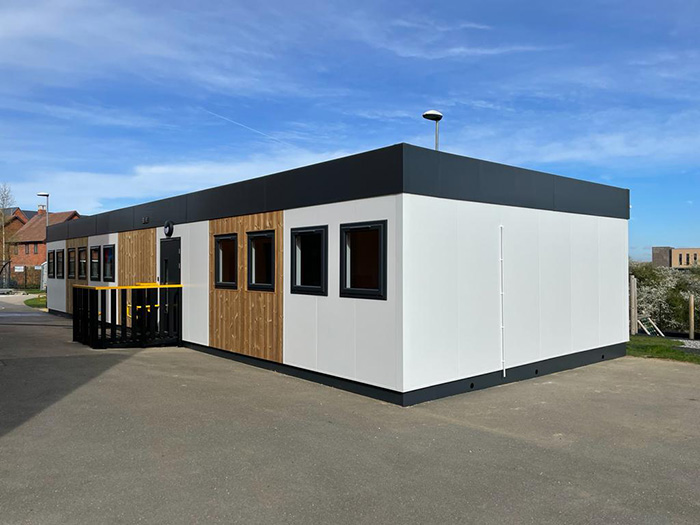Cotaplan Leading Modular Building Experts

Cotaplan have completed additional office buildings at the John Lennon airport that are 12m x 30m, 20 bay double storey modular building with internal and external staircases. Built for the Airport’s Directors and Administration staff. The building was designed to meet the standards of HTM/HBN. Anthracite windows and doors were added creating a modern feel in keeping with the surrounding buildings. The building was installed over two days and then had site applied cladding to eliminate any bay joints along the front and back. The reason why they chose to use a modular building compared to an additional brick building was because of the speed of the project. Using Modular buildings enabled Cotaplan to complete the project on time under tight deadlines.
Why Is Modular Building Better?
Modular building stands out as a superior construction method due to its efficiency, cost‑effectiveness, sustainability, design flexibility, and quality assurance. Firstly, the streamlined process of constructing modules off‑site in controlled factory environments significantly reduces construction time and costs. Additionally, the factory‑controlled setting ensures stringent quality control measures are consistently applied, resulting in high‑quality, durable structures. Moreover, modular construction promotes sustainability by minimising waste, conserving resources, and optimising energy efficiency. Its design flexibility allows for customizable solutions tailored to diverse architectural styles and functional requirements. Overall, modular building offers a compelling value proposition that aligns with the demands of modern construction projects, making it a preferred choice for developers, investors, and end‑users alike.

When Did Modular Construction Become Popular?
Modular construction gained popularity in the mid‑20th century, with the concept emerging as a response to the demand for affordable and efficient housing solutions. However, it wasn't until the latter part of the 20th century and early 21st century that modular construction began to gain widespread acceptance and adoption. Technological advancements, such as improved manufacturing processes and sophisticated design tools, played a pivotal role in enhancing the feasibility and appeal of modular construction. As construction industry trends shifted towards sustainability, efficiency, and innovation, modular construction emerged as a viable solution to meet these evolving demands. Today, modular construction continues to grow in popularity, fuelled by its numerous benefits and its ability to address the challenges facing the construction industry.

Are Modular Buildings The Future?
Modular buildings undoubtedly represent a significant part of the future of construction. With the construction industry facing challenges related to efficiency, sustainability, and affordability, modular construction offers a compelling solution that addresses these concerns. The efficiency of off‑site manufacturing, coupled with cost savings and reduced construction timelines, positions modular construction as a preferred choice for developers and investors seeking faster returns on investment. Additionally, the emphasis on sustainability and green building practices further drives the adoption of modular construction methods. The design flexibility of modular buildings allows for adaptable solutions that can meet diverse needs across residential, commercial, and industrial sectors. As technology continues to advance and societal demands evolve, modular construction is poised to play an increasingly prominent role in shaping the future of the built environment.
If you are looking for the UK leading experts with over 40 years experience in modular building and portable cabins then contact Cotaplan on 0800 7999 049.

























































